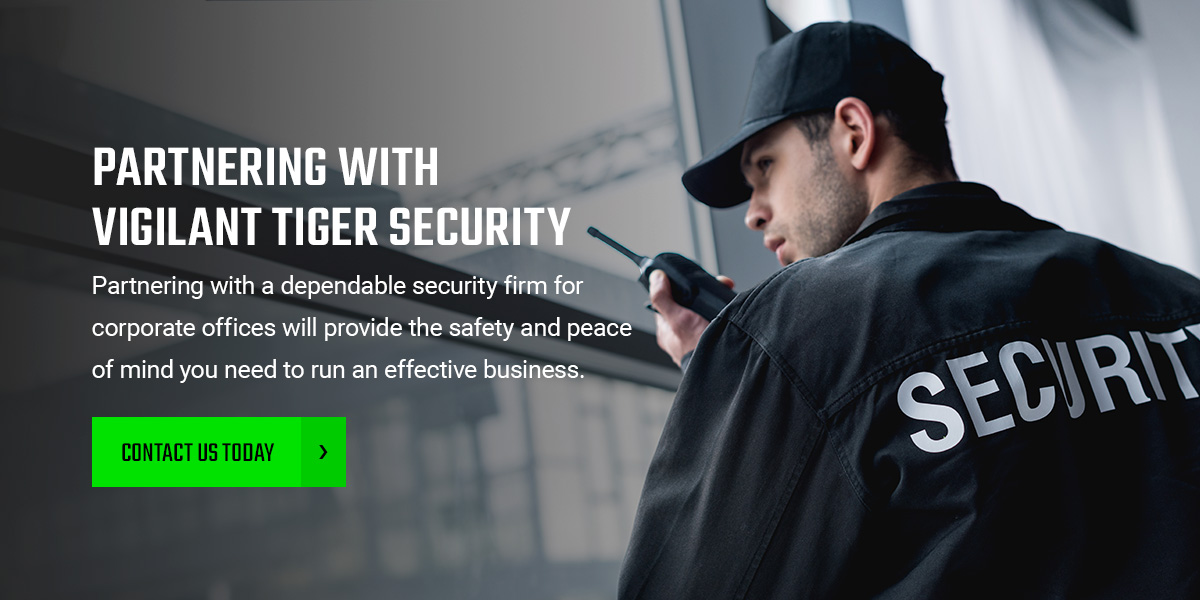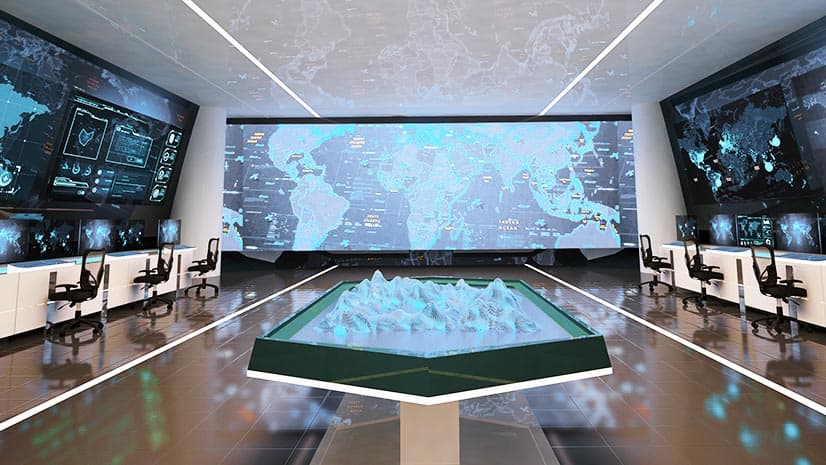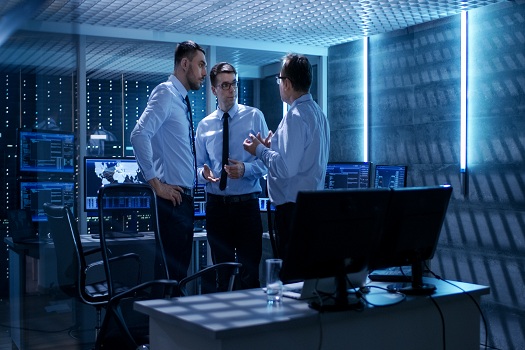Corporate Security Demystified: Enhancing Your Company Defenses
Corporate Security Demystified: Enhancing Your Company Defenses
Blog Article
From Cybersecurity to Physical Measures: Enhancing Corporate Safety And Security in a Transforming Globe
In today's swiftly advancing electronic landscape, the relevance of business protection can not be overemphasized. As cyber dangers become prevalent and progressively innovative, organizations have to exceed traditional cybersecurity measures to protect their operations and properties - corporate security. This is where the integration of physical protection procedures becomes vital. By combining the strengths of both cybersecurity and physical security, companies can create a detailed protection technique that addresses the varied series of hazards they encounter. In this conversation, we will certainly explore the altering danger landscape, the need to incorporate cybersecurity and physical safety and security, the application of multi-factor authentication procedures, the importance of worker awareness and training, and the adjustment of security steps for remote workforces. By taking a look at these crucial locations, we will certainly gain important understandings right into how companies can strengthen their company security in an ever-changing globe.
Comprehending the Transforming Danger Landscape
The evolving nature of the contemporary world necessitates a thorough understanding of the changing hazard landscape for efficient business safety and security. It is critical for organizations to stay educated and adapt their safety determines to attend to these progressing dangers.
One trick aspect of comprehending the transforming risk landscape is identifying the different kinds of hazards that companies face. Cybercriminals are regularly developing brand-new strategies to make use of susceptabilities in computer systems and networks. These threats can range from malware and ransomware assaults to phishing frauds and social design strategies. Additionally, physical hazards such as burglary, vandalism, and corporate espionage continue to be widespread worries for organizations.
Surveillance and examining the threat landscape is necessary in order to recognize prospective risks and vulnerabilities. This entails remaining upgraded on the most recent cybersecurity trends, assessing threat intelligence records, and conducting routine danger evaluations. By understanding the altering threat landscape, organizations can proactively execute ideal safety and security steps to mitigate risks and safeguard their possessions, credibility, and stakeholders.
Integrating Cybersecurity and Physical Safety
Integrating cybersecurity and physical safety and security is essential for comprehensive corporate defense in today's electronic and interconnected landscape. As companies progressively depend on technology and interconnected systems, the boundaries between physical and cyber dangers are ending up being obscured. To efficiently protect versus these threats, an alternative technique that combines both cybersecurity and physical safety and security procedures is essential.
Cybersecurity concentrates on safeguarding electronic properties, such as networks, systems, and data, from unauthorized gain access to, disruption, and burglary. Physical security, on the various other hand, encompasses procedures to safeguard physical possessions, people, and centers from dangers and vulnerabilities. By incorporating these 2 domains, companies can attend to vulnerabilities and threats from both electronic and physical angles, thereby boosting their overall protection pose.
The integration of these two disciplines allows for a more extensive understanding of protection dangers and enables a unified response to events. For example, physical access controls can be enhanced by integrating them with cybersecurity methods, such as two-factor verification or biometric recognition. Likewise, cybersecurity steps can be matched by physical security steps, such as surveillance cams, alarms, and protected accessibility factors.

Executing Multi-Factor Verification Steps
As organizations increasingly prioritize thorough safety and security procedures, one reliable approach is the execution of multi-factor authentication actions. Multi-factor authentication (MFA) is a safety approach that calls for users to supply numerous kinds of recognition to access a system or application. This strategy includes an additional layer of defense by incorporating something the user understands, such as a password, with something they have, like a fingerprint or a safety token.
By executing MFA, organizations can substantially enhance their safety and security posture - corporate security. Conventional password-based authentication has its limitations, as passwords can be easily compromised or neglected. MFA alleviates these dangers by adding an added verification element, making it harder for unapproved people to get to sensitive details
There are numerous kinds of multi-factor authentication techniques readily available, including biometric authentication, SMS-based confirmation codes, and equipment tokens. Organizations require to evaluate their specific needs and choose the most proper MFA remedy for their demands.
Nonetheless, the execution of MFA need to be carefully prepared and performed. It is crucial to strike a balance in between safety and security and usability to stop customer stress and resistance. Organizations ought to also consider possible compatibility problems go right here and give ample training and assistance to ensure a smooth transition.
Enhancing Employee Understanding and Training
To enhance corporate safety and security, organizations must prioritize boosting worker understanding and training. In today's rapidly advancing hazard landscape, employees play a critical function in securing an organization's delicate information and assets. Numerous safety violations occur due to human mistake or lack of awareness. Organizations need to spend in extensive training programs to enlighten their workers regarding possible dangers and the ideal practices for mitigating them.
Efficient worker understanding and training programs need to cover a large range of subjects, consisting of information defense, phishing strikes, social design, password health, and physical safety and security actions. These programs official site need to be customized to the details demands and obligations of different staff member functions within the organization. Regular training sessions, workshops, and simulations can help workers establish the required abilities and understanding to respond and recognize to security risks effectively.
Furthermore, companies ought to motivate a culture of safety recognition and provide recurring updates and pointers to maintain staff members educated regarding the current threats and reduction methods. This can be done with inner interaction networks, such as newsletters, intranet sites, and e-mail projects. By cultivating a security-conscious workforce, companies can considerably lower the possibility of protection incidents and secure their valuable assets from unauthorized access or compromise.

Adapting Safety And Security Measures for Remote Workforce
Adjusting corporate safety measures to accommodate a remote workforce is important in ensuring the security of delicate info and assets (corporate security). With the boosting trend of remote job, companies need to carry out appropriate safety and security measures to mitigate the threats connected with this brand-new method of functioning
One essential element of adjusting security procedures for remote job is developing secure communication channels. Encrypted messaging systems more and virtual private networks (VPNs) can assist safeguard sensitive details and stop unauthorized gain access to. Furthermore, organizations must implement making use of strong passwords and multi-factor authentication to enhance the safety of remote access.
An additional vital consideration is the execution of protected remote access solutions. This involves supplying workers with protected accessibility to company sources and information via virtual desktop computer facilities (VDI), remote desktop computer methods (RDP), or cloud-based options. These innovations make certain that delicate information continues to be safeguarded while making it possible for staff members to execute their roles successfully.

Last but not least, thorough safety recognition training is essential for remote workers. Educating sessions need to cover ideal methods for securely accessing and handling delicate information, determining and reporting phishing efforts, and keeping the general cybersecurity hygiene.
Conclusion
In final thought, as the hazard landscape proceeds to evolve, it is crucial for organizations to reinforce their safety determines both in the cyber and physical domain names. Incorporating cybersecurity and physical safety, carrying out multi-factor authentication procedures, and improving staff member understanding and training are crucial steps towards accomplishing robust business safety.
In this discussion, we will certainly check out the altering danger landscape, the need to incorporate cybersecurity and physical safety, the application of multi-factor verification steps, the value of employee recognition and training, and the adaptation of safety steps for remote workforces. Cybersecurity actions can be matched by physical protection measures, such as monitoring electronic cameras, alarm systems, and secure accessibility points.
As companies significantly prioritize detailed safety actions, one reliable technique is the application of multi-factor verification procedures.In verdict, as the threat landscape proceeds to develop, it is crucial for organizations to reinforce their safety determines both in the cyber and physical domains. Integrating cybersecurity and physical security, executing multi-factor verification actions, and boosting worker recognition and training are vital actions towards achieving robust corporate protection.
Report this page